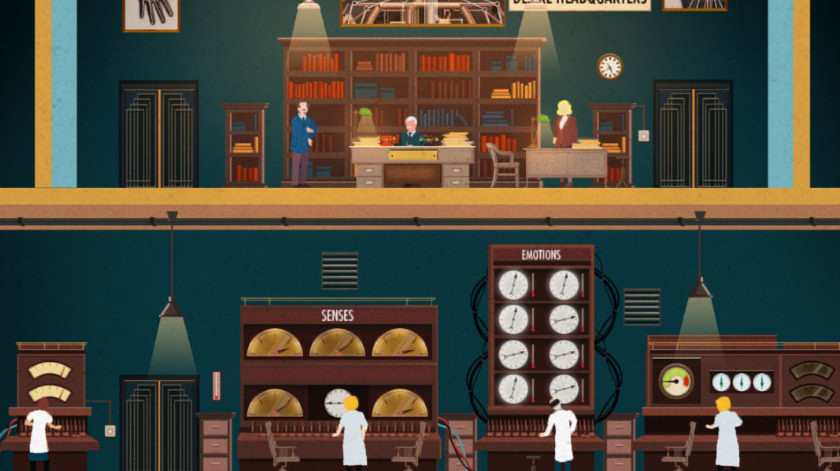Affiliate links on Android Authority may earn us a commission. Learn more.
Homo Machina is a fantastic, brief exploration of the human body factory (review)
With the proliferation of free-to-play mobile games and progression-blocking in-app purchases, sometimes a well made and unique paid title is just what the doctor ordered. Paris-based developer Darjeeling’s latest game Homo Machina offers just that. It’s visual style is based on the work of Fritz Kahn and has already earned the game a number of award nominations ahead of its official release today.
Fans of artsy puzzle games like Monument Valley will love Homo Machina. The game packs a fun and somewhat educational experience into a well polished — if short — experience.

The revival of Fritz Kahn’s incredible visuals
The graphics are the first thing that stands out about Homo Machina. They’re adapted from German-born physician Fritz Kahn’s artistic interpretation of the human body from the early 20th century. Although he didn’t create the artwork himself, his commissioned pieces presenting complex anatomical functions using industrial-age metaphors understandable by lay-people of the time.
Largely forgotten for decades, Kahn’s work has undergone somewhat of a revival in recent years. Homo Machina itself represents an effort by French-German producer Arte to build recognition and inspire a new generation of graphic artists. I’d recommend playing on a tablet or other device with a large screen to take in every detail.
Kahn’s early depictions of the inner workings of the human body have been faithfully adapted to touch screen devices in Homo Machina. The game plays through a day in the life of a factory inside the body of an unnamed male host. It’s your task to keep everything running smoothly.

The game starts as your host wakes up in the morning, and your first task is to open his eyes. Fittingly, they are retro-style field cameras with manual shutters. Film is a metaphor for vision, radio sound waves are a metaphor for sound recognition, and so on. The pulleys, gears, and other antiquated tech definitely add to the game’s charm, although sometimes it can be difficult to figure out their purpose.
Cutscenes propel the story forward between the game’s many puzzles. Most of them center around the wacky director of the human factory as his own romance flowers in parallel with his host’s. Everything is kept kid-friendly and silly, in a style that really works with the game’s visuals.
Alongside the visuals Darjeeling has produced a whimsical soundtrack with a real ear worm of a theme song. You’ll find yourself whistling the tune for hours, even after you put down your device and set about your daily tasks. The sound effects are also on point, and add to the ambiance of Fritz Kahn’s imaginative world.
Surreal touch-screen puzzles
Gameplay consists of a series of puzzles that keep various parts of the body working as intended. None of them feature instructions, so you’re left to tap and slide your finger around the screen to figure out the solution. Notably, the game is played with the screen locked vertically.
Each puzzle has a unique mechanic to keep gameplay engaging, and none are repeated throughout the game. The most challenging is the nerve system puzzle, since it’s timed and taking too long means failure. You can pick right back up where you left off with a few simple taps, so for the most part the game is a relaxing journey through the human body.
Aside from the elements used to solve each puzzle, there aren't many interactive elements
Aside from the elements used to solve each puzzle, there aren’t too many interactive elements on the screen. This is a shame, since the scenery is rich and detailed. Tapping on light fixtures makes them sway slightly, but machines and humanoid workers are just part of the background. I would have liked more freedom to tap around and explore each of the scenes.
Your freedom is further limited by the game’s forced progression. Even after completing all three chapters, you can’t go back and choose individual puzzles to play again. Your only options are to start a new game from the beginning or continue where you left off last time you played.
This is a bit disappointing, especially since the full game can be completed in under an hour. Each puzzle also follows a fixed pattern, so what you experience on the first play through is all that the game has to offer. I understand that developers want to keep the game’s narrative intact, but it comes at the cost of replayability.
Homo Machina is great for fans of the genre
Despite these minor setbacks, Homo Machina is a great game that’s worth the $2.99 (€3.49) price tag. It’s engaging, unique, and appropriate for all ages. Young children probably won’t notice much of the old technology and industrial-age aesthetic, but that shouldn’t stop them from enjoying the game and maybe even learning something along the way.
It’s also refreshing to play a complete mobile game free of in-app purchases. If you enjoyed other artsy mobile titles like Monument Valley and its sequel, odds are you’ll enjoy Homo Machina as well. It offers six different languages for audiences all over Europe, and it’s obvious that great care was taken to get things right.
The game is beautiful. It serves as an introduction to both the inner workings of the human body (though not an anatomically correct one), as well as the rich catalog of work published by Fritz Kahn. It’s available now, and can be downloaded from the link below.